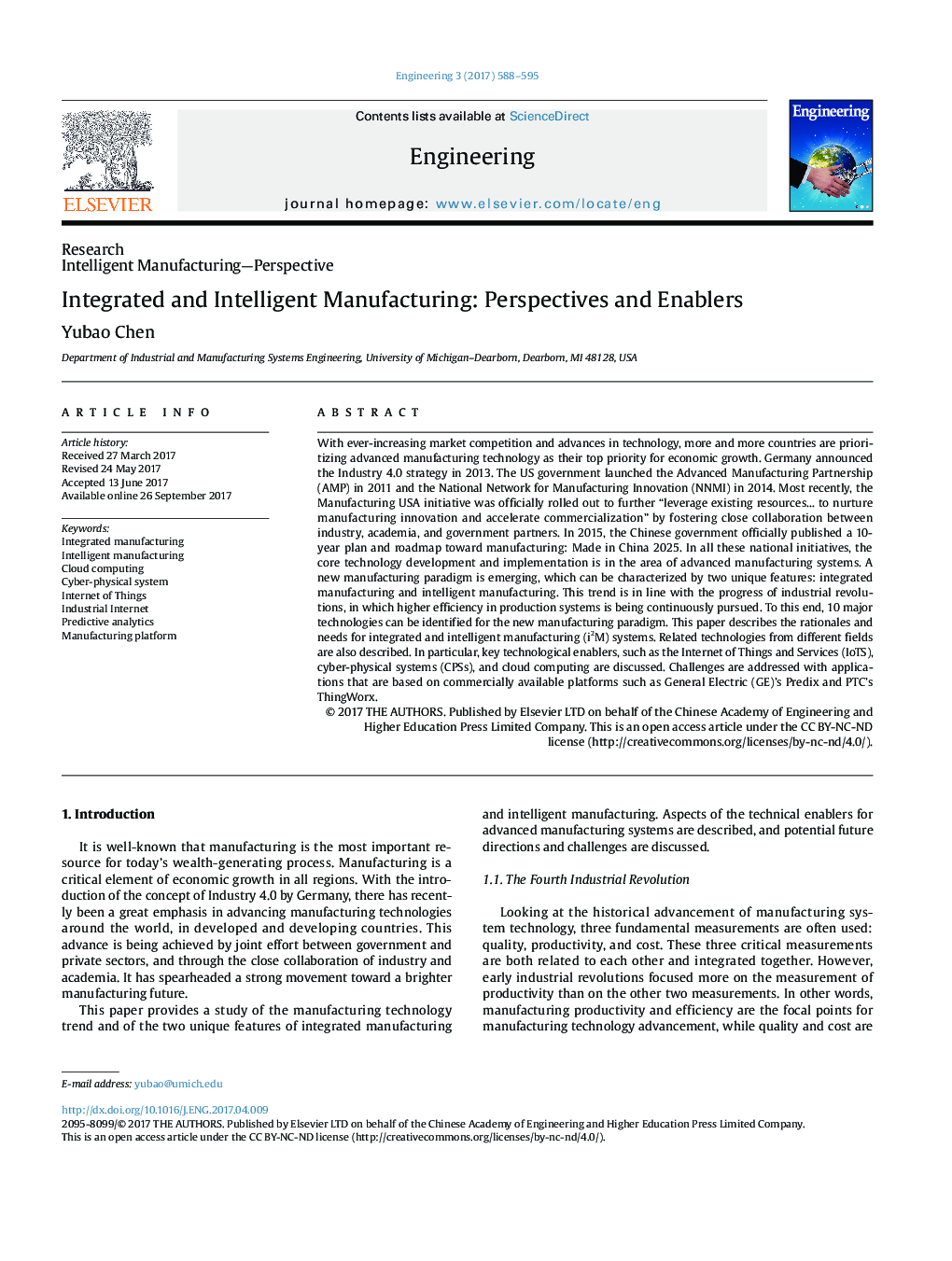| Article ID | Journal | Published Year | Pages | File Type |
|---|---|---|---|---|
| 6893431 | Engineering | 2017 | 8 Pages |
Abstract
With ever-increasing market competition and advances in technology, more and more countries are prioritizing advanced manufacturing technology as their top priority for economic growth. Germany announced the Industry 4.0 strategy in 2013. The US government launched the Advanced Manufacturing Partnership (AMP) in 2011 and the National Network for Manufacturing Innovation (NNMI) in 2014. Most recently, the Manufacturing USA initiative was officially rolled out to further “leverage existing resources... to nurture manufacturing innovation and accelerate commercialization” by fostering close collaboration between industry, academia, and government partners. In 2015, the Chinese government officially published a 10-year plan and roadmap toward manufacturing: Made in China 2025. In all these national initiatives, the core technology development and implementation is in the area of advanced manufacturing systems. A new manufacturing paradigm is emerging, which can be characterized by two unique features: integrated manufacturing and intelligent manufacturing. This trend is in line with the progress of industrial revolutions, in which higher efficiency in production systems is being continuously pursued. To this end, 10 major technologies can be identified for the new manufacturing paradigm. This paper describes the rationales and needs for integrated and intelligent manufacturing (i2M) systems. Related technologies from different fields are also described. In particular, key technological enablers, such as the Internet of Things and Services (IoTS), cyber-physical systems (CPSs), and cloud computing are discussed. Challenges are addressed with applications that are based on commercially available platforms such as General Electric (GE)'s Predix and PTC's ThingWorx.
Keywords
Related Topics
Physical Sciences and Engineering
Computer Science
Computer Science (General)
Authors
Yubao Chen,
